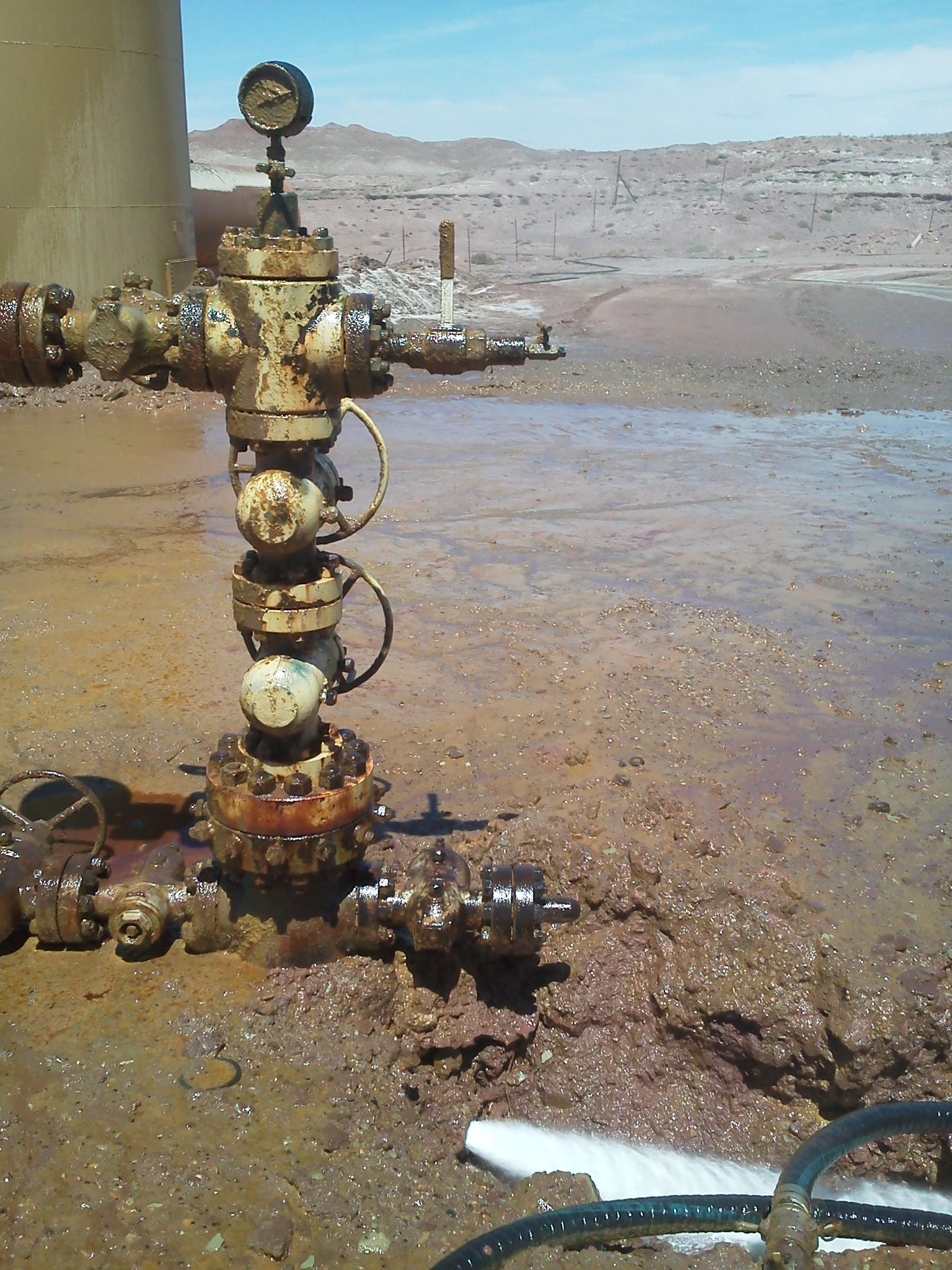Crews worked through the weekend to contain and remove oil and contaminants after a leaking oil well about 12 miles southeast of the town Green River was reported on Wednesday morning, May 21.
BLM Moab field manager Beth Ransel said that at one point, 3,000 to 4,000 gallons per hour were leaking onto BLM land in the Salt Wash field southeast of Interstate 70.
According to the BLM, the leak was contained on Thursday afternoon May 22, with help from the Utah Department of Environmental Quality, the Environmental Protection Agency (EPA) and S.W. Energy Corp., the Salt Lake City-based company that owns the well.
Remediation crews put measures in place prior to forecasted rainfall on Friday night, May 23 to keep oil and contaminated sediment from reaching the Green River, but heavy rains overwhelmed the prevention measures, causing oil and some surface contaminants to move downstream in the wash and enter the Green River. The exact quantity of oil and surface contaminants that entered the Green River is unknown, as is the total volume of leaked oil, Ransel said.
Remediation crews constructed a second underflow structure on Saturday, May 24 to try to protect against further migration of oil or surface contaminants in the event of another thunderstorm, and clean-up crews continued working to contain and remove contaminants within the wash.
“The BLM is taking this matter very seriously,” Utah BLM director Juan Palma said in a BLM press release. “We are working cooperatively with S.W. Energy, the State and EPA to assess the extent of the spill and will work on assessing impacts to natural resources. We were able to catch this incident and act quickly to contain the leak and minimize the potential impacts to the environment.”
Ransel said that the well was drilled in 1969 and has been a “low-producing well.”
“The BLM is up-to-date on inspections for this well, though the valve failure that occurred was below grade and would not have been visible during an inspection,” she said.
Conservationists have been quick to point out that this is another in a recent history of spills amid Utah’s gas and oil boom. The Salt Lake Tribune reported that in March, hikers discovered oil coating a wash near a well in the Grand Staircase-Escalante National Monument and further searches around the Upper Valley oil field found old spills in four other washes and evidence of fresh leaks on the field itself.
According to a Utah Rivers Council press release, these spills threaten the watersheds that provide millions of downstream residents with water. The organization also said this spill threatened the well-being of four endangered fish species that inhabit the Green River.
“Utahns are sick of these spills,” Utah Rivers Council executive director Zach Frankel said. “We’ve had three oil spills in three months and mounting evidence that Utah is unprepared to manage the pollution boom caused by Utah’s rush to approve new oil and gas wells.”
Sierra Club representative Tim Wagner said recurring events like this one show that the oil and gas industry cannot be trusted.
“It’s also indicative of what our future holds for us as long as we have a governor who thinks that dirty energy is Utah’s future.”
According to the Utah Rivers Council, Utah’s explosion in oil and gas development over the last 10 years has led to a similar rise in accidents and spills. The state is ranked 10th in natural gas output and 11th in crude oil production with about 11,200 wells in operation, according to the Utah Division of Oil, Gas and Mining.
Living Rivers conservation director John Weisheit said it’s only a matter of time before a spill contaminates the public water supply.
“Anyone who depends upon the Colorado River should look upstream to Utah… It’s not ‘if,’ but ‘when,’” he said.
An on-site coordinator from the EPA arrived on Sunday, May 25 and cleanup crews continued to work on containing and removing oil from the wash and the pad. The BLM said it is monitoring the clean-up and remediation efforts and is taking steps to assess resources that may have been impacted by the spill.
Valve failed on aging rig owned by S.W. Energy Corp.; Heavy rains carried contaminants down Salt Wash
“Anyone who depends upon the Colorado River should look upstream to Utah because it’s only a matter of time before one of these spills contaminates their water supply. It’s not ‘if,’ but ‘when.'”
BLM will continue to update its website, www.blm.gov/ut/st/en/fo/moab/SaltWashSpill.html, as damage assessments are completed and corrective action plans are prepared and implemented.




